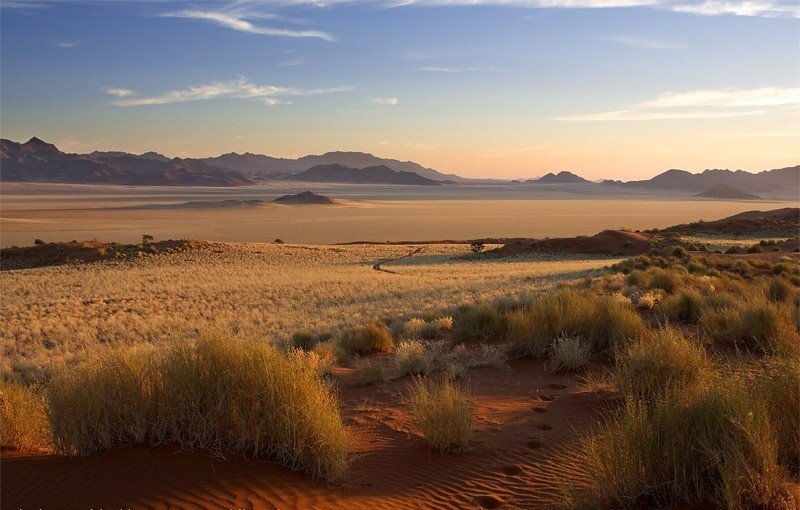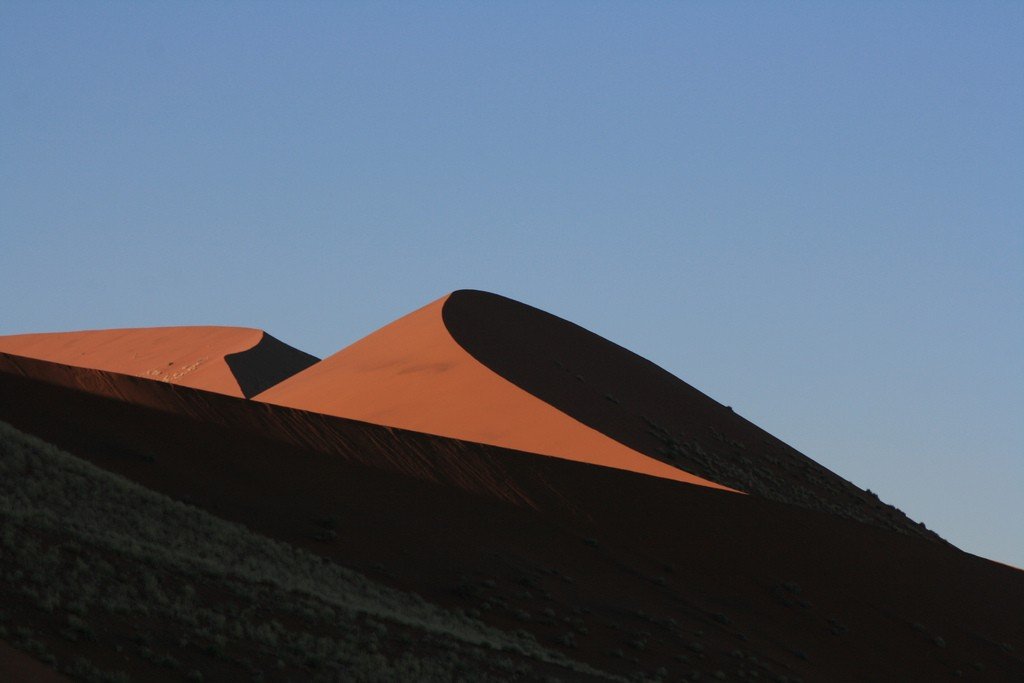Namib Desert
Namib Desert, the oldest desert on Earth, is located in the Namib Naukluft Park, the fourth largest nature reserve in the world, covering an area of 49,768 square kilometers. The name “Namib” means “place where there is nothing.”
The Namib extends for 1,900 kilometers along the Atlantic Ocean coast through all of Namibia to the mouth of the Olifants River in South Africa. From the ocean, the desert goes inland 50 to 160 km to the foot of the inland plateau; in the south it joins the southwestern Kalahari.”










Nature of the desert
Desert conditions have existed here continuously for 80 million years, i.e. the desert was formed at the time of the dinosaurs.
One of the most amazing things about the desert is that the desert is a habitat that is not found anywhere else in the world.
One of the most amazing native plants is the Tumboa, or Velvichia, which grows in the northern part of the desert. The Velvicia grows only two giant leaves, slowly growing its entire life, which can last 1000 years or more, but nevertheless the leaves rarely exceed a length of 3 meters because they are constantly being erased by the wind, which tears the leaves into thin pieces and intertwines them. The leaves are attached to the stem, which resembles a huge radish of conical shape with a diameter of 60 to 120 centimeters, and sticking out of the ground for 30 centimeters. The roots of velichivia go into the ground to a depth of up to 3 meters. Velichivia is known for its ability to grow in extremely dry conditions, using dew and mist as its main source of moisture. Velvicivia, endemic to the northern Namib, is depicted on the Namibian national coat of arms.
.In slightly wetter parts of the desert is another well-known Namib plant, the nara, another local endemic that grows on sand dunes. Its fruits form the food and moisture source for many animals that cannot otherwise survive in the desert, from African elephants to antelopes and porcupines.
.
Another characteristic desert plant is the cockerbome, or quiver tree, a succulent up to 7 meters tall.
.The hollows and dunes of the inner Namib provide shelter for some species of antelope, such as gemsbok (Oryx) and springbok, as well as ostriches and sometimes zebras. Elephants, rhinos, lions, hyenas, and jackals are found in the northern desert, especially in the river valleys that flow from the inner plateau to the Atlantic. The dunes of the outer Namib provide a home for some spiders, mosquitoes (mostly beetles and ants), and reptiles, especially geckos and snakes, but mammals are virtually absent here.
Climate
Near the ocean coast, temperatures rarely fall below 10 degrees Celsius or rise above 16 degrees Celsius. In inland desert areas, summer temperatures reach 31 degrees. In places where cool sea breezes don’t reach – on the windless sides of dunes or in deep canyons – temperatures can rise above the 38 degrees typical of low latitude deserts.
.At night, temperatures sometimes drop to freezing in the desert’s interior. For a few days each year, usually in the spring or fall, a hot, dry wind blows in from the east. It raises the temperature above 38 degrees over the entire desert and brings huge clouds of dust that reach the ocean and are visible even from space.
.
Rare rainfall comes in the form of brief but extremely powerful downpours. The annual rainfall on the coast is 13 millimeters and gradually increases as one moves inland, reaching a level of 52 mm near the foot of the inland plateau on the eastern edge of the desert. But there are years when there is no rain at all. Nevertheless, due to the peculiarities of the climate, very abundant dew falls in the morning, and for some species of plants and animals it is a much more important source of moisture than precipitation. Winter storms sometimes reach the extreme south of the desert and rule over South Africa around the Cape of Good Hope; snow sometimes falls on the high southern mountains.
What to see and try
Climbing the world’s tallest red and gray sand dunes at sunrise or sunset is an unforgettable experience, as their summits overlook the wind-driven creations of rock formations, valleys and plains, while the sun’s rays turn the sand of the dunes into a huge variety of pinks, yellows and purples.
.
In the rainy season, many birds come to the desert, while in the dry season you can see oryx chamois, jumping gazelles and ostriches. Thanks to the fog that sweeps in from the Atlantic, this lifeless land is home to many species of birds and animals.
.
A night spent in a tent under an endless blanket of stars can be one of the most memorable of an entire stay in Africa.
.